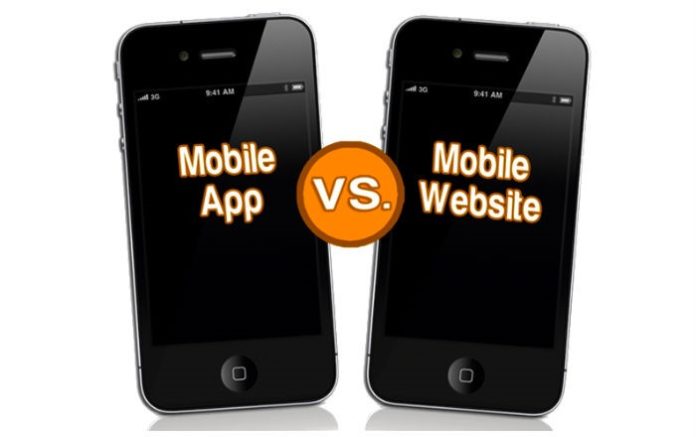your business needs to be accessible on mobile devices, but you’re torn between developing an app and opting for a mobile website. If you’re not totally clear on the difference between these two approaches, or you’re unsure of how to weigh the pros and cons.
Apps
App is an abbreviated term for software application, and one of the defining features of an app is that it must be downloaded on a device for the user to access it. So, if you create an app for your business, you will have to submit it for approval to an app store, and then your customers or user base will have to look for it in that app store and download it.
Pros
There are several advantages to developing an app for your business. First, apps allow businesses (assuming the app user agrees) to send out push and/or in-app notifications. The ability to reach a customer base that is already aware of your brand and interested in it (otherwise they wouldn’t have downloaded the app in the first place) is tremendously valuable, but it’s important to note that many users opt out of notifications.
Another benefit of apps is the ability to use them offline. While most app functions, like accessing maps and making in-app purchases or calls, only work online, the basic information in the app (such as store location, hours, menus and products) can be accessible even without service.
Cons
Creating, publishing, publicizing and maintaining apps can be more time-consuming than managing a mobile website. First, if you want to reach people who use Apple and Android products, you’ll have to submit your app for approval in both the Apple App Store and the Google Play Store. The guidelines for acceptance into app stores are not written in stone, and as they change, you will have to make sure your app stays in compliance with the rules. Additionally, most businesses require a website as well as an app, so understand that if you go the app route (unless you’re planning on forgoing websites all together, which is inadvisable), you’ll probably also need to create a website.
Another obstacle you may face after creating a business app is getting users to find and use it. If you own a well-established business and have a marketing plan in place to tell customers about your app, or your app offers some valuable functionality to users, this may not be an issue.
Mobile and responsive websites
Before smartphones and tablets were a thing, websites were created to display on laptop and desktop computers. The designs of such websites were unresponsive, which means they did not naturally scale to different screen sizes and were difficult to view and use on smaller screens. At first, this was not problematic because no one was trying to view websites on smartphones or tablets, but once mobile devices became popular, the disadvantages of website designs became clear. Then, mobile websites emerged, and many SMBs with existing websites created mobile versions of their sites so users could easily view them on the go and use them with touchscreen devices, sans mouse.
For some time, apps, websites and mobile websites all existed in separate buckets, but now, responsive websites are becoming the norm and the lines are blurring.
Editor’s note: Considering an ecommerce website design company? We can help you choose the one that’s right for you. Use the questionnaire below to have our sister site, BuyerZone, provide you with information from a variety of vendors for free:
Pros
To meet the mobile and desktop needs of SMBs, many website creation software subscriptions now include responsive website functionality. These no-code design programs allow you to create a single design that automatically translates from laptop to desktop to mobile device. This type of all-in-one solution has many pros. For instance, users don’t have to download anything to access your website, and you never have to deal with app store application or compliance.
Responsive websites are also easier to maintain than apps. When you need to update a piece of information, all you have to do is change it once in the responsive website editor and it will automatically make the changes across all device types, regardless of operating system.
Cons
There are still some no-code platforms out there that don’t offer responsive website designs. While services like these are typically free or inexpensive, they are inadvisable for forward-thinking SMBs. Today’s users expect access to websites on all devices, and there are many excellent responsive design options.
Bottom line
Both apps and websites are simple to create, but for SMBs that are not tech or app-specific companies, a responsive website is the best option. Apps and responsive websites have many of the same options, such as one-click calling, social sharing, ecommerce and click-to-map navigation. However, phone space is limited, and apps require a download, while responsive websites do not. Most customers of local businesses search for information in a regular browser, and a responsive web design will allow them to connect with your business from anywhere without additional marketing to point them to your app.




















































